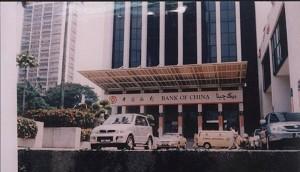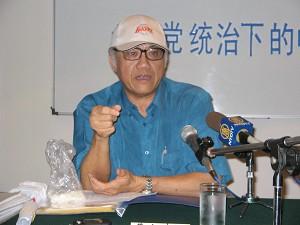A Malaysian pharmaceutical businessman has claimed that the Bank of China dishonestly made his 100 million yuan bank deposit shrink to 8.92 yuan.
Mr. Cai ShaoHong, a pharmaceutical manufacturer, exposed the cheating process to audiences at the sixth Nine Commentaries on the Communist Party forum held in Penang on July 23, 2006.
The Cheating Process
Cai’s father lived in Ipoh when he was alive. His father had opened a current account in the Bank of China Singapore branch and deposited total of 111 million FaBi (Kuomingdang’s currency) through a Malaysian agent from August 1946 to May 1948. The value of the current account deposit was equivalent to more than 20 million USD at that time, says Cai. In 1953, the Chinese Communist Party placed a public notice in Malaysia newspapers to inform their customers to claim back deposits from the Bank of China Singapore branch. On August 23, 1953, Cai’s father went through the administrative procedures hoping to withdraw his deposit within the given 1 year period.
The Singapore branch collected two check books and a bank deposit book from his father as part of the procedures. Since that time, they have not been able to withdraw any money from the bank for years. The branch had explained to them that the Headquarter in Xiamen did not transfer their money to the branch. The ’transfer' was delayed for years.
Cai’s father passed away in 1983. After thirty years of continuous trying, not a single cent could be withdrawn. Cai’s father had written a will to authorise Cai to get back the bank deposit on behalf of him.
Dramatically In 1997, the bank sent a letter to inform Cai that the deposit was only worth 8.92 Yuan. He was instructed to withdraw the money from the Headquarters in Xiamen, China.
When Cai approached the Bank of China Malaysia branch in Kuala Lumpur, the bank told him that they were only the Malaysian branch and has no relationship with the Headquarters in Xiamen, China.
“This is nonsense. Aren’t all the branches of the Bank of China in the world under control by the Headquarters in Xiamen? Isn’t the logo of the Kuala Lumpur branch the same as the rest of other branches?” Cai asked the audience.




